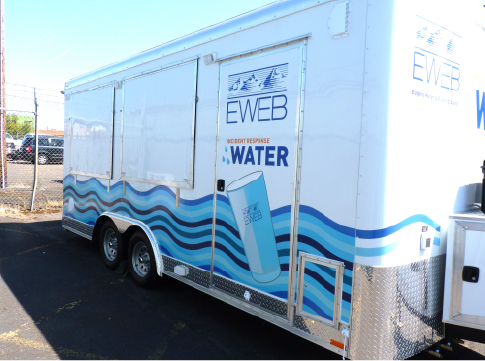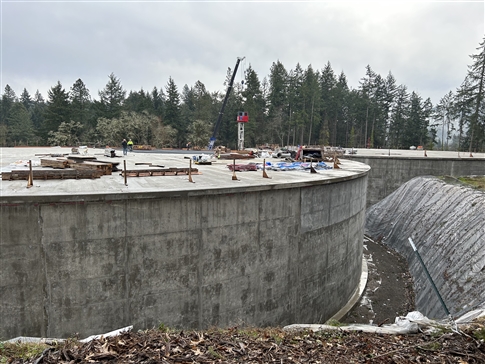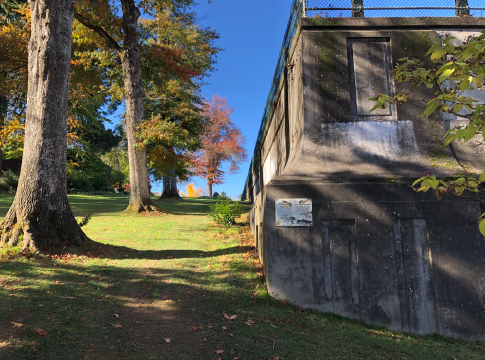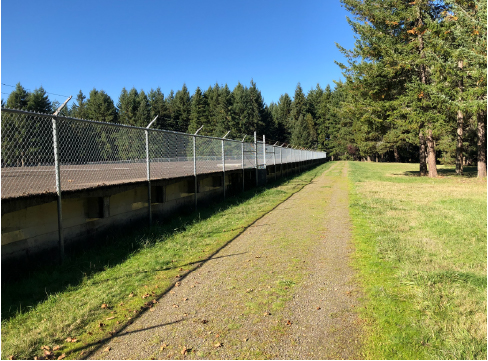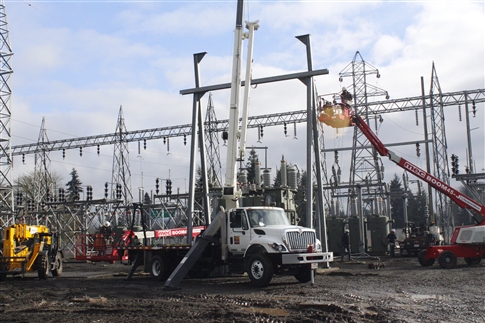Active Projects: |
College Hill Reservoir | North Shasta Loop Water Storage Tank |
Access to clean water is vital to our community. EWEB is hard at work making sure safe, reliable water continues to flow even as critical infrastructure ages and new challenges arise.
Base-level water storage tanks are part of Eugene’s resilient spine—facilities that must remain operational after an earthquake to meet critical community needs, including fire suppression, public health, and emergency drinking water supplies, while repairs are being made to the distribution system. In 2020, EWEB began a multi-year project to replace Eugene's large base-level reservoirs with multiple smaller tanks to improve resiliency, increase operational efficiency, and enhance water quality. New tanks will be built to seismic and contemporary operating standards, providing more than 40 million gallons of resilient, safe water storage.
These are once-in-a-lifetime improvements that will provide safe drinking water to generations of Eugene residents.
While a safe, resilient water system benefits all customers, facility construction will have direct impacts on surrounding neighbors. As a public utility, we are committed to careful planning, responsible use of public funds, and meaningful customer engagement. This page will be updated throughout the course of the projects and will include information about how you can stay informed and involved.
Six Things You Should Know
1. Base-level water storage tanks in the south hills serve the majority of Eugene. These sites were selected by EWEB decades ago because they are at a consistent elevation of 607 feet above sea level, allowing the tanks to work together and use gravity to transport water into the network of pipes without relying on electric pumps.
2. Aging water storage facilities must be replaced. Base-level tanks built at College Hill in the 1940s and Hawkins Hill in the 1960s do not meet modern seisimic standards and would not survive a major earthquake.
3. To supplement EWEB's existing storage, new tanks were constructed on an undeveloped site near 40th Avenue. EWEB acquired the 10-acre site in the 1950s for this specific purpose. This 15 million gallons of storage makes it possible to first decommission, then replace other vulnerable facilities.
4. When improvements are completed, six smaller water storage tanks will replace the existing large tanks. This distributed approach improves water quality, operational and maintenance flexibility and increases our resiliency to potentially disruptive events.
5. After construction, the sites will remain in public use. Although the new tank structures will be fenced to protect drinking water, unused portions of the sites will be open to public access.
6. Construction Mitigation Plans will be developed to minimize impacts on neighbors. The water storage sites are surrounded by residences that could be impacted during construction. EWEB and our contractors will work closely with neighbors to anticipate, mitigate and address potential impacts from noise, vibration, dust, erosion, construction traffic, and other aspects.
In addition to strengthening our base-level water storage, EWEB is planning for a new water treatment plant and river intake on the Willamette River, building new transmission mains, developing emergency water stations, and restoring and protecting the McKenzie watershed. These source-to-tap drinking water programs are helping keep our water systems prepared and adaptable to future changes.
Learn how new water storage facilities will better withstand natural disasters and protect public health.
In March 2024, EWEB completed construction of two new 7.5 million gallon earthquake-proof tanks on an undeveloped 10-acre site.
EWEB is replacing the leaky and antiquated reservoir with new, modern drinking water storage tanks built to withstand major earthquakes.
Protecting the McKenzie River Watershed helps to ensure excellent drinking water quality for customers and residents today and into the future.
Access to clean water is vital to our community. That is why we work hard to deliver water that meets or exceeds all state and federal health standards.

